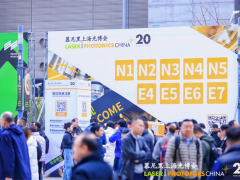據(jù)油價(jià)網(wǎng)4月23日消息稱,英國的電池存儲(chǔ)市場將在未來幾年呈指數(shù)級(jí)增長,到本十年末將達(dá)到24吉瓦(GW)的容量。雷斯塔能源的分析顯示,這些公用事業(yè)規(guī)模的電池系統(tǒng)將吸引高達(dá)200億美元的投資,其綜合能源儲(chǔ)備足以為1800萬戶家庭提供一年的電力。由于這種快速擴(kuò)張,英國將占全球裝機(jī)容量的近9%,排在美國和德國之后,位居第四。
隨著英國安裝更多的太陽能和風(fēng)能基礎(chǔ)設(shè)施,由于這些可再生能源的間歇性,對可靠存儲(chǔ)解決方案的需求也在增加。因此,政府制定了雄心勃勃的儲(chǔ)能需求目標(biāo),目標(biāo)是到2030年實(shí)現(xiàn)30吉瓦的容量,包括電池、飛輪、抽水蓄能和液態(tài)空氣儲(chǔ)能。
我們預(yù)計(jì)英國將達(dá)到甚至超過其目標(biāo),但前提是政府解決了一些預(yù)期的障礙。也就是說,確保電池系統(tǒng)的廣泛電網(wǎng)連接,緩解供應(yīng)鏈問題,并為抽水蓄能項(xiàng)目制定政策框架。
大規(guī)模的電池開發(fā)將很快成為英國的常態(tài),解決了平衡短期電力需求與風(fēng)能和太陽能發(fā)電間歇性的問題。這可能只是個(gè)開始。如果政府出臺(tái)更多刺激投資的措施,經(jīng)濟(jì)可能很快就會(huì)進(jìn)一步增長。
在英國4.7吉瓦的儲(chǔ)能裝機(jī)容量中,電池儲(chǔ)能系統(tǒng)(BESS)僅占約2.1吉瓦。目前的大部分容量,2.8吉瓦,來自抽水蓄能——一種渦輪驅(qū)動(dòng)的水力蓄能形式,水在兩個(gè)不同高度的水庫之間流動(dòng)。盡管這些系統(tǒng)效率很高,但開發(fā)新產(chǎn)能所需的金融和監(jiān)管障礙意味著英國不太可能在短期內(nèi)增加新項(xiàng)目。然而,政府計(jì)劃在2024年底之前制定一項(xiàng)長期儲(chǔ)能(LDES)發(fā)展戰(zhàn)略,如抽水蓄能,從長遠(yuǎn)來看,這將促進(jìn)產(chǎn)能建設(shè)。
由于政府決定取消對項(xiàng)目規(guī)劃的規(guī)模限制,電池開發(fā)不僅在數(shù)量上增長,而且在規(guī)模上也將增長。因此,英國最常見的BESS項(xiàng)目規(guī)模將實(shí)現(xiàn)飛躍,一些單個(gè)項(xiàng)目甚至超過1吉瓦。這種規(guī)模的電池項(xiàng)目可能需要多達(dá)55英畝的土地,相當(dāng)于40多個(gè)足球場。
在目前的項(xiàng)目中,英國公司Alcemi已成為市場領(lǐng)導(dǎo)者,擁有3.3吉瓦的產(chǎn)能。去年,該公司與哥本哈根基礎(chǔ)設(shè)施合作伙伴合作,在英國建設(shè)了約4吉瓦的儲(chǔ)能項(xiàng)目。目前約有2吉瓦的BESS項(xiàng)目處于申請階段,另有1.3吉瓦處于預(yù)申請/概念階段。
Zenobe也是一家總部位于英國的公司,在英國的BESS項(xiàng)目管道中排名第二,處于不同開發(fā)階段的項(xiàng)目超過1吉瓦。總部位于愛丁堡的Intergen也因其兩個(gè)總計(jì)820兆瓦的大型BESS項(xiàng)目而躋身前五,其中包括將于今年晚些時(shí)候開始建設(shè)的Gateway項(xiàng)目。該項(xiàng)目在去年舉行的容量市場拍賣中獲得了一份為期15年的供電合同。
BESS可以在電網(wǎng)中發(fā)揮至關(guān)重要的作用,包括頻率調(diào)節(jié)、電壓支撐和電力儲(chǔ)備,同時(shí)提高電網(wǎng)的穩(wěn)定性和可靠性。為了鼓勵(lì)發(fā)展,英國國家電網(wǎng)開辟了五個(gè)收入來源,BESS項(xiàng)目投資者可以從中獲利。選擇正確的收入來源可以為電池運(yùn)營商帶來可觀的收入。例如,電網(wǎng)穩(wěn)定的動(dòng)態(tài)遏制服務(wù)和容量市場拍賣計(jì)劃正在推動(dòng)電池儲(chǔ)能的部署。然而,滿足進(jìn)入此類計(jì)劃的技術(shù)要求可能具有挑戰(zhàn)性。
曹海斌 摘譯自 油價(jià)網(wǎng)
原文如下:
UK To See Rapid Expansion In Battery Storage Through 2030
The UK’s battery storage market is set for exponential growth in the coming years, rising from the ground up to reach 24 gigawatts (GW) capacity by the end of the decade. These utility-scale battery systems will attract investments of up to $20 billion and have enough combined energy reserves to power 18 million homes for a year, Rystad Energy analysis shows. Thanks to this rapid expansion, the UK will account for almost 9% of all global capacity installations, sitting fourth in the table, the US and Germany.
As the UK installs more solar and wind energy infrastructure, the need for reliable storage solutions increases due to the intermittent nature of these renewable sources. Consequently, the government has set ambitious energy storage requirement targets, eyeing 30 GW of capacity by 2030, including batteries, flywheel, pumped hydro and liquid air energy storage.
We project that the UK will meet and even surpass its target, but only if the government addresses some expected roadblocks. Namely, ensuring widespread grid connections for battery systems, mitigating supply chain issues and developing a policy framework for pumped hydro projects.
Large-scale battery developments will soon be the norm in the UK, solving the problem of balancing short-term power demand with the intermittency of wind and solar generation. And this could just be the start. Further growth could soon be on the way if the government introduces additional incentives to spur investments.
Of the 4.7 GW of installed energy storage capacity in the UK, battery energy storage systems (BESS) account for only about 2.1 GW. Most of the current capacity, 2.8 GW, comes from pumped hydro storage – a form of turbine-powered hydroelectric storage where water moves between two reservoirs at different heights. Although these systems are efficient, the financial and regulatory hurdles required to develop new capacity mean the UK is unlikely to add new projects in the short term. However, the government plans to establish a strategy for long-duration energy storage (LDES) developments, such as pumped hydro, by the end of 2024, boosting capacity buildout in the long term.
Battery developments are not only set to grow in number but also in scale thanks to the government’s decision to lift size restrictions on project planning. As a result, the most common size of BESS projects in the UK is set to leap, with some single projects even topping 1 GW. A battery project of this scale could require as much as 55 acres of land, equivalent to more than 40 football fields.
In the current pipeline of projects, UK company Alcemi has emerged as the market leader with 3.3 GW of capacity in the pipeline. Last year, the company partnered with Copenhagen Infrastructure Partners to build around 4 GW of energy storage projects in the UK. Around 2 GW of its BESS projects are currently at the application stage, and another 1.3 GW are under the pre-application/concept stage.
Zenobe, also a UK-based company, takes second place in the UK’s BESS project pipeline with over 1 GW of projects under different stages of development. Intergen, based in Edinburgh, is also in the top five thanks to its two large-scale BESS projects totaling 820 MW, including the Gateway project that will begin construction later this year. The project secured a 15-year contract to deliver power under the capacity market auction held last year.
BESS can play an essential role in the power grid, including frequency regulation, voltage support and power reserve, while enhancing grid stability and reliability. To encourage developments, the National Grid opened five revenue streams on which BESS project investors can capitalize. Choosing the right revenue stream can deliver significant revenues to battery operators. For instance, the dynamic containment services for grid stability and the capacity market auction schemes are driving the battery energy storage deployment. However, meeting the technical requirements to enter such schemes can be challenging.
免責(zé)聲明:本網(wǎng)轉(zhuǎn)載自其它媒體的文章及圖片,目的在于弘揚(yáng)石化精神,傳遞更多石化信息,宣傳國家石化產(chǎn)業(yè)政策,展示國家石化產(chǎn)業(yè)形象,參與國際石化產(chǎn)業(yè)輿論競爭,提高國際石化產(chǎn)業(yè)話語權(quán),并不代表本網(wǎng)贊同其觀點(diǎn)和對其真實(shí)性負(fù)責(zé),在此我們謹(jǐn)向原作者和原媒體致以崇高敬意。如果您認(rèn)為本站文章及圖片侵犯了您的版權(quán),請與我們聯(lián)系,我們將第一時(shí)間刪除。







